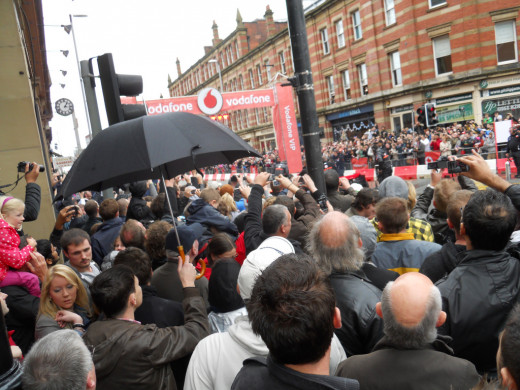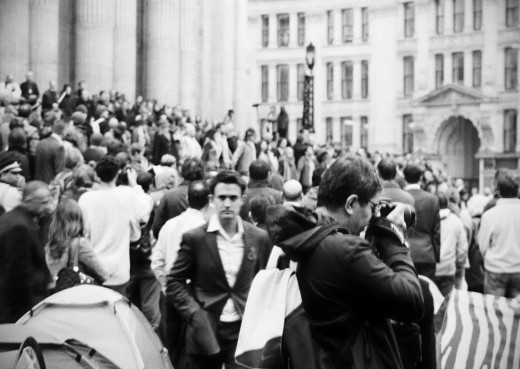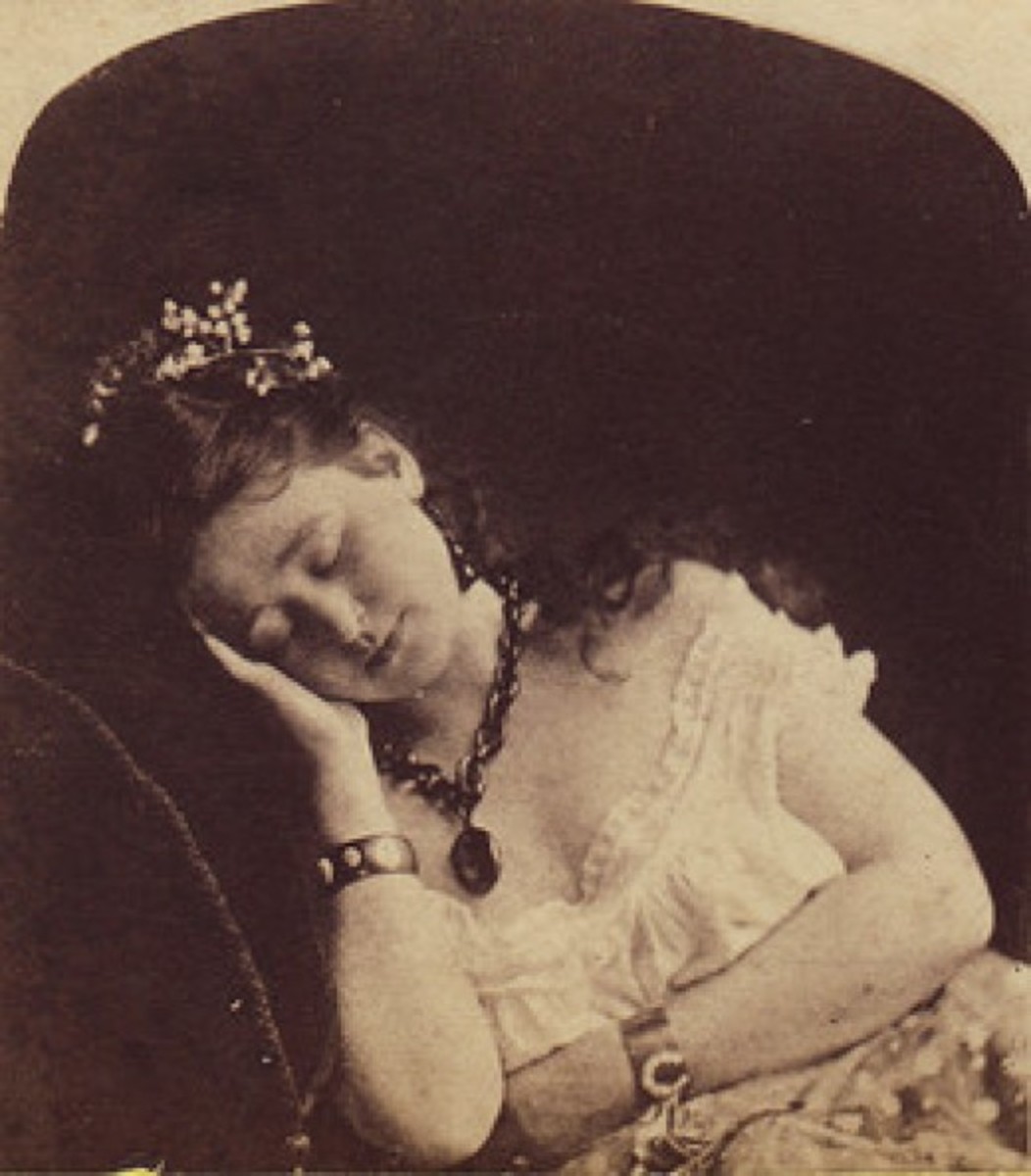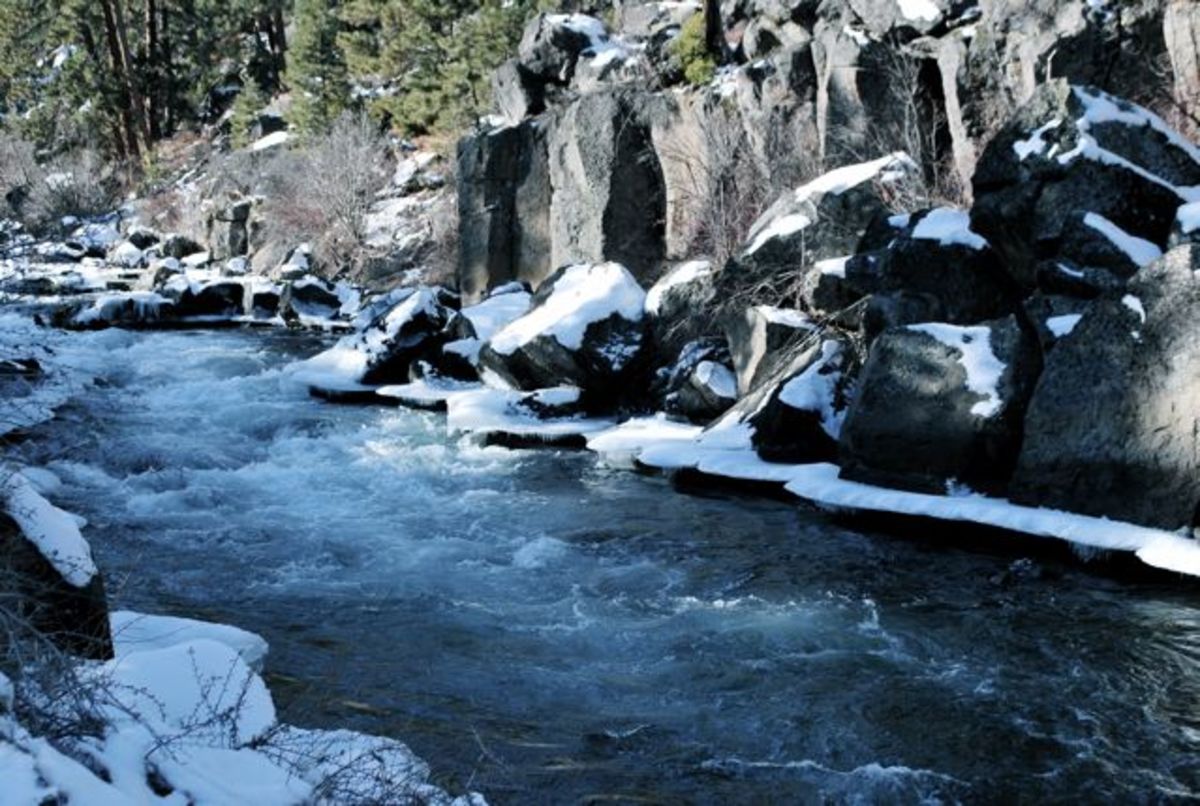Photography and a Crowd

Photographing crowds has never been an easy photographic project regardless of what anyone will tell you. Photographing a crowds is not just simply aiming your camera at a large group of people and snapping the shot, anyone can do that.
The secret and it's not really a secret at all but rather a technique, is to find an interesting small group within the much larger group or one or two individuals within the larger group and focusing on them. The images should be representative of the movement or the intention of the march or group formation in the first place.
Take for example the Occupy movement now rapidly growing all over the world. Most professional photographers who are covering such an event will record images that are representative of the people involved, the message, as well as other scenes such as the general location and wide angle shots that encompass as many participants as possible.
However the best shots are those that will transmit the idea behind the group gathering or march to an audience.
Depending on the purpose of the gathering, group or march, some of the images that are worth recording would be those that show people addressing the crowd. These shots should focus closely on the body gestures of the speakers and the expression of the listeners. Images that show sings ,placards are also good too.
Especially noteworthy are images of hand made and impromptu signs since they tend to represent well the emotions that can sometimes accompany any such gathering. Signs, masks, placards, flags, clothing or anything of interest is fair game and worth photographing as well as any precautions that involves the ever present authority figures.
Sometimes these groups or demonstrations can become something else, often taking a turn of extremes from comical to violent. Aim at recording all extremes, remember that whomever finally looks at your images must "feel" the atmosphere as if they were in attendance themselves. Off course be practical and use common sense. No photographs is worth a risk of injury or harm.
Your photographs should encompass a multitude of angles and with various perspectives; long shots that show as many people as possible, close ups of demonstrators, wide angles that give a sense of the number of people and any notable fixed landmarks. If the group has an agenda such as grievance against a corporation or entity then some of the shots should also be of these.
Read the following for a better understanding of what a march, demonstration, protest or populous gathering is considered to be:
"A demonstration or street protest is action by a mass group or collection of groups of people in favor of a political or other cause; it normally consists of walking in a mass march formation and either beginning with or meeting at a designated endpoint, or rally, to hear speakers.
Actions such as blockades and sit-ins may also be referred to as demonstrations. Demonstrations can be nonviolent or violent (usually referred to by participants as "militant"), or can begin as nonviolent and turn violent dependent on circumstances.
Demonstrations can be used to show a viewpoint (either positive or negative) regarding a public issue, especially relating to a perceived grievance or social injustice. A demonstration is usually considered more successful if more people participate. Topics of demonstrations often deal with political, economic, and social issues." Wikipedia
Whatever your definition or whether you will be photographing a large group, a large gathering of people with a common purpose or a large crowd of people protesting a wrong or advancing an ideal, focus your efforts on recording what the event means to the participants.
You need to transmit this to an audience so that they can "feel" through your images what those that were there felt and experienced. Accompany the main group of images, if at all possible, with images of instances or events or actions that lead to such a movement. If you can accomplish this, then you have gone a long way to making your photographs outstanding and emotive.










